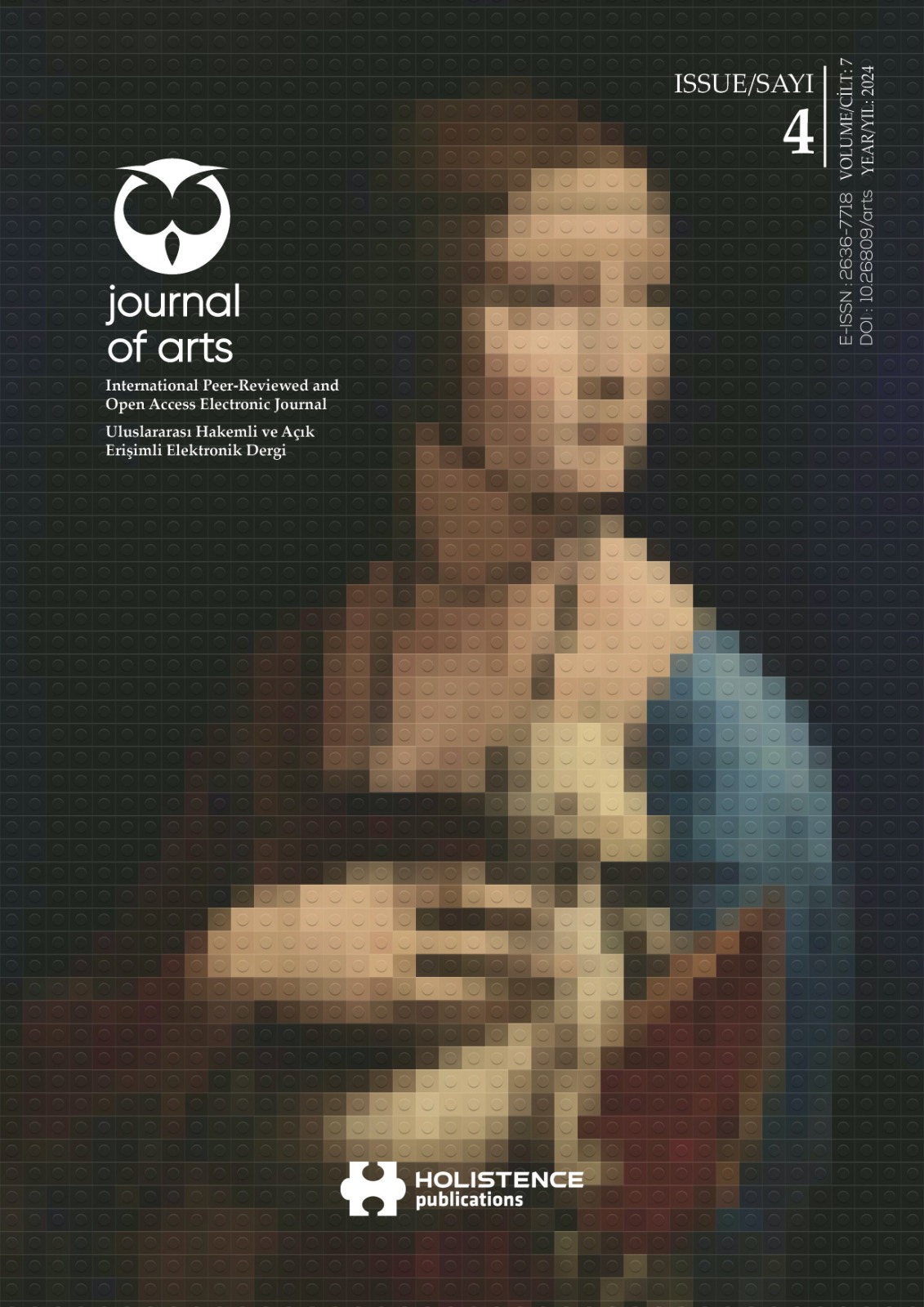Abstract
Since the second half of the 20th century, artists’ experiments with innovative technologies such as computers, internet, virtual reality, artificial intelligence, data visualization and interactive systems have laid the foundation for the birth of new media art. New media art, with its dynamics that instrumentalize technological products based on computers, has created an alternative production area to traditional art productions as painting, sculpture, ceramics, print painting, etc. The spread of the internet and the fact that it has become the medium of artists has brought new questions in the definition of a work of art, artists have diversified the production conditions and methods of reaching the audience institutions that add content related to new media art to their curricula stand out with their current understanding in the field of education. The interest of our higher education institutions providing art education in new media art, examples of which have been seen in Turkiye since the 1980s, is a matter of curiosity. The impact of digital technologies on art and art education causes transformations in the approach of students studying art to the subject. Today, when generation Z receives art education, the state of interest in digital art should be discussed in undergraduate departments that provide traditional painting education. New media art has become very visible with the technological developments surrounding our lives, but it has not been able to achieve an effective position in the field of education.
In this context, the research article examines the approach of young artist candidates to new media art in the process of creative expression. Undergraduate students studying in the 2024-2025 fall semester at the Faculty of Fine Arts of Çanakkale Onsekiz March University painting department were selected as a research cluster in order to get student opinions on new media art. The data obtained with the participation of 41 of the 109 students actively studying in the department of painting were analyzed and the findings were interpreted. According to the results of the research, although most of the students surveyed stated that they had a basic knowledge of new media art, reluctance to receive education, produce works and conduct research in this field was found. The aim of the research is to discuss the inclusion of new media art in traditional art education programs and to create a record about the students’ approach to new media art.
References
BAUDRILLARD, J. (2010). Sanat Komplosu. Çevirenler: Elçin Gen – Işık Ergüden. İstanbul: İletişim Yayınları. ISBN: 978-975-05-0800-4
BURNHAM, J. (1970). Software: Information Technology, It’s New Meaning of Art. New York: Jewish Museum.
BÜYÜKPARMAKSIZ, M. A., & OKUR, A. (2021). Sanat Eğitimi Alan Öğrencilerin Yeni Medya Sanatına Yönelik Görüşleri. Ekev Akademi Dergisi (85), 247-264.
ÇOMÜ. Kurumsal Değerlendirme Sistemi,https://ogrenciisleri.comu.edu.tr/:https://ubys.comu.edu.tr/BIP/BusinessIntelligence/Home/Index [Erişim tarihi: 15/10/2024
DİKEN. Refik Anadol’un NFT eseri 21 milyon TL’ye satıldı. www.diken.com.tr: https://www.diken.com.tr/refik-anadolun-nft-eseri-acik-artirmada-21-milyon-tlye-satildi/ Erişim tarihi: 12/10/2024
DOLUNAY, A. (2016). Teknolojinin Görsel Sanatlar ve Sanat Eğitimine Katkısı. Uluslararası Sosyal Araştırmalar Dergisi, 9(42), 1208-1213.
ERKAYHAN, Ş., & ÇAŞKURLU BELGESAY, M. (2014). Teknoloji ve Sanatın Etkileşimi: Yeni Medya Sanatı. Sanat ve Tasarım Dergisi(14), 45-62.
KAPROL, T. (2016, 06 08). Geçmişten Günümüze Yeni Medya ve Türkiye'deki Yansımaları. https://www.artfulliving.com.tr/: https://www.artfulliving.com.tr/sanat/gecmisten-gunumuze-yeni-medya-ve-turkiyedeki-yansimalari-i-6667 Erişim tarihi: 15/10/2024
MANOVICH, L. (2001). The Language of New Media. Cambridge: MIT Press. ISBN: 9780262632553
MCQUIRE, S. (2006). The Media City: Media, Architecture, And Urban Space. Londra: SAGE Publications. ISBN: 9780857025371
MUL, J. D. (2008). Siberuzayda Macera Dolu Bir Yolculuk. (A. Özdamar, Çev.) İstanbul: Kitap Yayınevi. ISBN: 9789756051894
PAUL, C. (2008). Digital Art. London: Thames & Hudson. ISBN: 978-0500204238
POPPER, F. (1983). Electra: Electricity and Electronics in the Art of the 20th Century. Paris: Musée d'Art Moderne de la Ville de Paris. ISBN: 2-904497-03-X
REICHARDT, J. (1968). Cybernetic Serendipity. London: Studio International. ISBN:9781948764001
RINDER, L. (2001). Bitstreams. New York: Whitney Museum of American Art.
STALLABRAS, J. (2009). Sanat A.Ş. Çağdaş Sanat ve Bienaller. İstanbul: İletişim Yayınları. ISBN: 9789750506994
STOCKER, G. (1999). Ars Electronica: Facing the Future. Massachusetts: The MIT Press. ISBN: 0-262-041 76-6
TRIBE, M. (2006). New Media Art. Koln: Taschen. ISBN: 978-3822830413
SABANCI ÜNİVERSİTESİ. (2024, 10 10). Görsel Sanatlar ve Görsel İletişim Tasarımı. Sabancı Üniversitesi: https://www.sabanciuniv.edu/ Erişim tarihi: 16/10/2024

This work is licensed under a Creative Commons Attribution 4.0 International License.
Copyright (c) 2024 Holistence Publications


